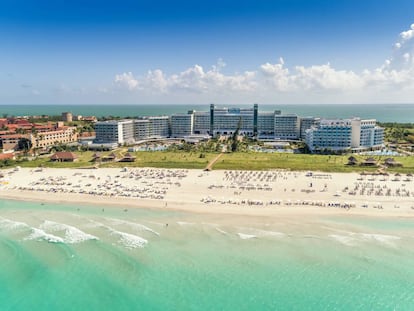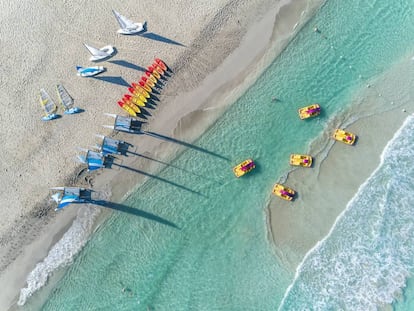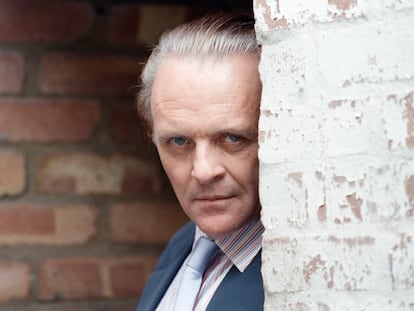Russians, vaccines, sun and sand to reactivate the Cuban tourism industry
Cuba has refocused on Varadero and its well-established tourist areas to kick-start international tourism with Covid-19 safeguards in place and a national vaccination plan

Sun and sand, and in particular the 23 kilometers of pristine beaches in the resort town of Varadero, have once again become the jewels in Cuba’s tourism crown during the coronavirus pandemic. Covid-19 restrictions have prevented the vast majority of foreign tourists from traveling and close to 85% of Cuba’s hotels are shut but an enforced year off has allowed the beaches to recover and nature to flourish, while some of the most emblematic hotels in the famous resort have taken the opportunity to carry out significant refurbishments.
Several years ago, when nobody could have predicted what was coming, the island embarked on a campaign to diversify its tourism sector in favor of promoting its heritage cities. As well as its hundreds of kilometers of pristine beaches and keys, Cuba has the highest number of historic centers, ancient fortresses and landscapes included on UNESCO’s World Heritage list of any country in the Caribbean region. Havana, Trinidad, Camagüey, Cienfuegos and Santiago de Cuba are among the cities with the richest cultural heritage and the world’s biggest hotel chains have been opening establishments in these destinations over the past decade.
There has been one significant change in Varadero: with Canadian tourism on standby, Russians have become the main visitors
But restrictions imposed due to the pandemic, which recommend reducing tourism in cities to prevent the spread of the coronavirus, have led Cuba to refocus on its already well-established tourist trail of beachfront resorts, where today health and sanitary safety have become as important an attraction as coconut groves, white sands and emerald waters.
The biggest hotel chain in Cuba, Meliá Hotels International, which operates a quarter of the total number of four- and five-star hotel rooms on the island, is an example of which way the wind is blowing. Meliá has over 30 hotels in Cuba of which only seven are currently open: the Meliá Habana, in the capital, four in Varadero and two in Cayo Coco.
Varadero’s 23km of coastline, with its 52 hotels, is the most famous stretch of sand in Cuba and the most historic. For several years, it has been listed by travel company TripAdvisor as among the best beaches in the world. Before the pandemic, Varadero hosted almost a million tourists per year, the majority of them from Canada, Germany, Spain, other EU countries and Latin America, although things have changed now.

In these lean economic times, Meliá, Iberostar and the other major hotel chains have placed their chips on Varadero and the northern keys to kick-start the tourism industry. The beaches are in better shape than ever and hotels have made some notable improvements. What’s more, to set visitors’ minds at ease Cuba has introduced coronavirus protocols that are difficult to match anywhere in the world: every hotel has its own on-site doctor, nurse and epidemiology expert and access to the Cuban health system. There is also light at the end of the tunnel with two Cuban vaccines – Soberana 02 and Abdala – in phase 3 clinical trials. With these vaccines, the government is aiming to vaccinate half of the island’s population before the end of summer.
With all of these safeguards in place, Iberostar has opened three of the seven hotels it operates in Varadero and Meliá four of its 12 establishments. Together with the Sol Varadero Beach and the Meliá Península, the Spanish chain has kept the two most emblematic hotels in the area running, the Meliá Internacional and the Sol Palmeras, the former the first hotel in Cuba built as a joint venture and currently undergoing a complete renovation. Both chains are also reopening hotels in Cayo Coco and Cayo Guillermo.
There has been one significant change in Varadero: with Canadian tourism on standby and Europe waiting until summer arrives to make a decision on international travel, Russians have become the main customers. On average one flight a day arrives from Moscow with around 20,000 tourists a month arriving from Russia. Meliá has employed Russian translators and offers traditional Russian dishes at its restaurants as well as menus in the Cyrillic alphabet. A few days ago, a veteran Meliá hotel manager greeted a group of enthused Muscovite guests in the lobby in their language: “Добро пожаловать [welcome].” C’est la vie, and in Cuba the ability to adapt is key.
English version by Rob Train.
Tu suscripción se está usando en otro dispositivo
¿Quieres añadir otro usuario a tu suscripción?
Si continúas leyendo en este dispositivo, no se podrá leer en el otro.
FlechaTu suscripción se está usando en otro dispositivo y solo puedes acceder a EL PAÍS desde un dispositivo a la vez.
Si quieres compartir tu cuenta, cambia tu suscripción a la modalidad Premium, así podrás añadir otro usuario. Cada uno accederá con su propia cuenta de email, lo que os permitirá personalizar vuestra experiencia en EL PAÍS.
¿Tienes una suscripción de empresa? Accede aquí para contratar más cuentas.
En el caso de no saber quién está usando tu cuenta, te recomendamos cambiar tu contraseña aquí.
Si decides continuar compartiendo tu cuenta, este mensaje se mostrará en tu dispositivo y en el de la otra persona que está usando tu cuenta de forma indefinida, afectando a tu experiencia de lectura. Puedes consultar aquí los términos y condiciones de la suscripción digital.
More information
Archived In
Últimas noticias
Most viewed
- Sinaloa Cartel war is taking its toll on Los Chapitos
- Oona Chaplin: ‘I told James Cameron that I was living in a treehouse and starting a permaculture project with a friend’
- Reinhard Genzel, Nobel laureate in physics: ‘One-minute videos will never give you the truth’
- Why the price of coffee has skyrocketed: from Brazilian plantations to specialty coffee houses
- Silver prices are going crazy: This is what’s fueling the rally









































